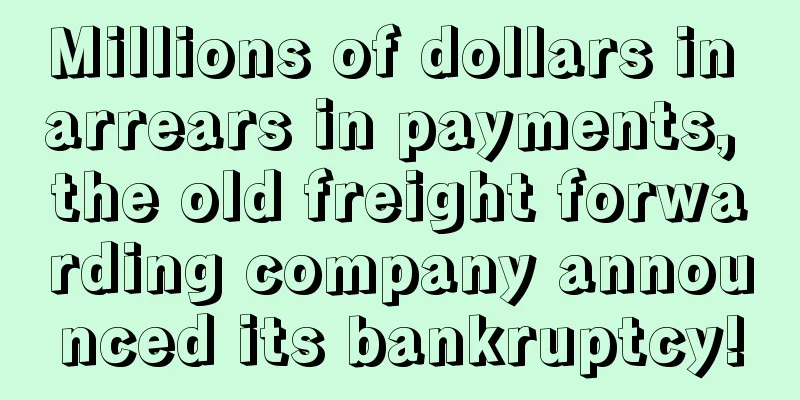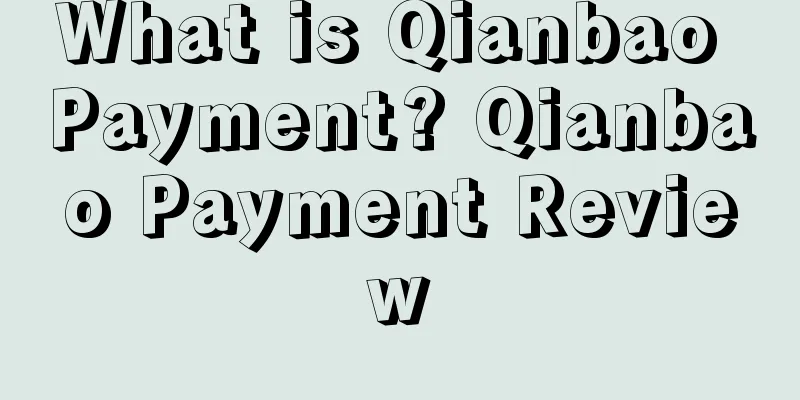What is input tax? Input tax assessment

|
Input tax refers to the amount of value-added tax paid or borne by taxpayers when purchasing goods, processing, repair, and maintenance labor, services, intangible assets, or real estate. Input tax = (purchased raw materials, fuel, and power) × tax rate. Scope of application Purchased goods Chinese name Input tax Chinese name Input VAT Category VAT 1. Calculation formula Input tax refers to the VAT paid on the purchase of goods or taxable services during the current period. When calculating, the amount after deducting the input tax from the output tax is the VAT payable. Therefore, the amount of input tax is directly related to the amount of tax paid. Generally, the following formula is used for calculation in the financial statement calculation process: Input tax = (purchased raw materials, fuel, power) * tax rate Input tax is money already paid and is recorded on the debit side when making accounting entries. II. Scope 1. Deduction allowed According to the tax law, the input tax that can be deducted from the output tax is limited to the VAT amount indicated on the following VAT deduction vouchers and the input tax calculated at the prescribed deduction rate: 1. When a taxpayer purchases goods or taxable services, he or she shall obtain the VAT indicated on the deduction form of the special VAT invoice from the seller. 2. The price paid by taxpayers for the purchase of tax-free agricultural products to agricultural producers or small-scale taxpayers can be deducted from the input tax at 10% of the price indicated on the purchase voucher approved for use by the tax authorities. 3. When purchasing duty-free grain from Chinese grain purchasing and sales enterprises, you can deduct the input tax at 10% of the amount of the ordinary invoice obtained. 4. The freight paid by taxpayers for purchasing goods and selling goods (excluding loading and unloading fees, insurance premiums and other miscellaneous expenses) can be deducted from the input tax at 7% based on the freight and fund amount listed on the freight settlement document (ordinary invoice). 5. General taxpayers of manufacturing enterprises that purchase tax-free waste materials sold by waste material recycling units can deduct the input tax at 10% of the amount indicated on the ordinary invoice issued by the waste material recycling units and supervised by the tax authorities. 6. Enterprises that purchase special equipment and general equipment for the VAT anti-counterfeiting tax control system can deduct the tax amount from the VAT output tax amount by using the tax amount indicated on the special invoice obtained for the purchase. 2. No deduction is allowed 1. When a taxpayer purchases goods or taxable services, he fails to obtain and keep the VAT deduction certificate in accordance with the regulations, or the VAT deduction certificate fails to indicate the VAT amount and other relevant matters in accordance with the regulations; 2. When a general taxpayer has any of the following circumstances, the tax payable shall be calculated according to the VAT rate based on the sales amount, and the input tax amount shall not be deducted, nor the special invoice shall be used: The accounting is not sound, or the company is unable to provide accurate tax information; Those who meet the conditions for general taxpayers but do not apply for general taxpayer certification procedures. (1) Purchase of goods or taxable services for non-taxable items. The so-called non-taxable items refer to the provision of non-taxable services, transfer of intangible assets, sale of real estate and fixed asset construction in progress. No matter how the taxpayers calculate the financial accounting, the construction, reconstruction, expansion, repair and decoration of buildings are all fixed asset construction in progress. (ii) Purchases of goods or taxable services for tax-free items. (iii) Purchases of goods or taxable services for collective welfare or personal consumption. The so-called collective welfare and personal consumption refer to the welfare facilities such as canteens, bathrooms, barber shops, dormitories, kindergartens, etc. set up within the enterprise for employees to use, as well as their equipment, items, etc., or items distributed to individual employees in the form of welfare, rewards, allowances, etc. (iv) Abnormal losses of purchased goods. (V) Purchased goods or taxable services consumed by work-in-progress or finished products that suffer abnormal losses. Abnormal losses refer to losses other than normal losses in the production and operation process, including: 1. Losses caused by theft, mildew, deterioration, etc. of goods due to poor management; 2. Other abnormal losses. (VII) The input tax borne by foreign-invested enterprises for the purchase of Chinese raw materials for goods directly exported shall not be refunded, nor shall it be deducted from the output tax of goods sold domestically, but shall be included in the cost. (VIII) If a general VAT taxpayer obtains a special VAT invoice issued by an anti-counterfeiting tax control system and fails to obtain certification from the tax authorities within 180 days from the date of issuance of the special invoice (if the invoice is issued after July 1, 2017, the certification period is within 360 days from the date of issuance), it shall not be deducted from the input tax; if a special VAT invoice issued by an anti-counterfeiting tax control system that has passed the certification fails to calculate its input tax in accordance with relevant regulations and declare it for deduction in the month of certification, it shall not be deducted from the input tax. (IX) The VAT recovered by the taxpayer due to purchase withdrawals or allowances should be deducted from the input tax in the period when the purchase withdrawals or allowances occur. (10) The input tax to be deducted from any form of refund received from the seller due to the purchase of goods shall be calculated based on the value-added tax rate of the purchased goods and shall be deducted from the input tax in the period in which the refund is received. For the above-mentioned non-deductible input tax, if the enterprise has carried forward the value-added tax input tax at the time of purchase, once verified, the input tax shall be transferred out. 3. Accounting Treatment 1. Category 1 Input tax on purchased goods or taxable services and imported goods 1. Purchase of duty-free agricultural products. Purchase of duty-free agricultural products refers to the purchase of primary agricultural products from agricultural producers. Example: A taxpayer purchased 4 tons of fruit from a farm and paid 10,000 yuan. The tax-inclusive sales price of the fruit was set at 2,500 yuan/ton. The input tax = 10,000 yuan/(1+10%) = 9,090.91 yuan, with a tax rate of 10%. The accounting entry is: Debit: Merchandise Purchase 9090.91 Taxes payable - VAT payable (input tax) 909.09 Credit: Bank deposit 10000 2. Purchase of other non-fixed assets. The input tax amount of other non-fixed assets purchased by taxpayers is the value-added tax amount indicated on the special value-added tax invoice issued by the seller. 3. Import of non-fixed assets: The input tax amount of imported non-fixed assets is the value-added tax amount indicated on the tax payment certificate issued by the customs. Example: Taxpayer A imported 100 tons of steel plates for RMB 200,000. The customs collected RMB 50,000 in tariffs and RMB 40,000 in value-added tax. The goods have been inspected and put into storage. The planned price of this batch of steel plates is RMB 2,600 per ton. The accounting entries are: (1) Debit: Material Purchase 250,000 Taxes payable - VAT payable (input tax) 40,000 Credit: Bank deposit 290000 (2) Debit: Raw materials 260,000 Credit: Material purchase 250000 Material cost difference 10000 4. Purchase of taxable services: The input tax amount of taxable services purchased by taxpayers is the value-added tax amount indicated on the special value-added tax invoice for processing fees or repair fees issued by the service provider. 5. Purchase or import of fixed assets and goods. When taxpayers purchase or import fixed assets and goods, they cannot deduct the input tax, regardless of whether they receive a VAT deduction certificate. Therefore, the input tax paid should be included in the value of fixed assets and accounted for in the fixed assets account. 2. Second Category Accepting input tax on consignment sales When a taxpayer is entrusted to sell goods on consignment, he or she may not calculate the input tax or perform accounting for the input tax when the goods are accepted. The accounting for the input tax shall be performed after the consignment goods settlement list is issued and the special invoice from the client is received. Example: Taxpayer B sold all 100 washing machines entrusted by Taxpayer A for consignment sales. The total sales price was RMB 80,000 and the output tax was RMB 12,800. Taxpayer B issued a consignment sales goods settlement list and received a special VAT invoice issued by Taxpayer A. The accounting entry is: 1. When accepting goods, the tax-inclusive price determined by the contract between the two parties shall be Debit: Consignment sales of goods 92800 Loan: 92800 yuan for consignment sales 2. When receiving a special VAT invoice and paying at the same time Debit: Accounts Payable 80000 Taxes payable - VAT payable (input tax) 12800 Credit: Bank deposit 92800 3. The third category Input tax on investment and donated goods For goods obtained by taxpayers through investment or donation, the input tax amount is also the value-added tax amount indicated on the special value-added tax invoice issued by the investor or donor. 4. Note Input tax that cannot be deducted from output tax The Provisional Regulations and the Implementation Rules provide that if a taxpayer uses purchased goods or taxable services for non-taxable items, tax-free items, collective welfare or personal consumption, or suffers abnormal losses, the input tax shall not be deducted from the output tax. However, since the specific use of goods or taxable services cannot be determined at the time of purchase, the input tax of the purchased goods or taxable services is often deducted from the output tax of the tax period when the goods or taxable services are purchased. However, when these actions that should not be deducted from the output tax occur, accounting treatment should be made that the input tax should not be deducted. This requires that the input tax of the goods or taxable services that should not be deducted be calculated in accordance with regulations during the tax period when these actions occur, and deducted from the current input tax. The specific treatment should be distinguished from the following situations. 1. Used for fixed asset construction in progress, collective welfare or personal consumption. The purchase of goods or taxable services used for fixed asset construction in progress is not limited by whether it is accounted for in the "construction in progress" account. Even if the taxpayer's expenses for building repairs and decorations should not be accounted for in the "construction in progress" account, the purchased goods or taxable services in the expenditure are also considered to be used for fixed asset construction in progress as stipulated by the tax law. Similarly, even if the purchase of goods or taxable services used for collective welfare and personal consumption is not accounted for in the "wages payable", "welfare payable" or "surplus reserve" accounts, the input tax amount cannot be deducted from the output tax amount. Example: The taxpayer has used a batch of decoration materials in the store's inventory for the decoration of the store's office. The original purchase price of the decoration materials is unknown. The enterprise carries forward the cost of 10,000 yuan based on the selling price and amortizes the difference between the purchase price and the sales price of 2,000 yuan. According to the "Implementation Rules", since the input tax amount of the decoration materials at the time of purchase cannot be accurately determined, the non-deductible input tax amount can be calculated based on the actual cost carried forward. The non-deductible input tax amount is (10,000-2,000) × 16% = 1,280 (yuan). The accounting entry is: Debit: Deferred expenses 11280 Credit: Inventory 10000 Taxes payable - VAT payable (input tax transferred out) 1280 At the same time, debit: the difference between the purchase and sale price of goods 2000 Credit: Deferred expenses 2000 2. Abnormal losses. The input tax of the purchased goods or taxable services consumed by abnormally lost work-in-progress and finished products has generally been deducted in previous tax periods. After a loss occurs, it is generally difficult to verify when the lost goods were purchased in the past. The original purchase price and input tax cannot be accurately determined. Therefore, the principle introduced in Example 25 should be followed, that is, the input tax that cannot be deducted should be calculated based on the actual cost of the goods. The actual cost of the purchased goods or taxable services consumed in the lost work-in-progress and finished products should also be calculated with reference to the company's current cost data. 3. Used for tax-free projects and non-taxable projects. For goods or taxable services used for tax-free projects and non-taxable projects, the non-deductible input tax can be calculated based on the actual purchase price or actual cost carried forward by the enterprise under normal circumstances. Some enterprises, such as commercial enterprises, often divide commodities into several major categories due to the wide variety of goods they operate, and calculate sales costs by major categories. The actual cost of a certain tax-free commodity in a major category cannot be found, so the input tax of goods used for tax-free projects cannot be accurately calculated. For similar issues, the "Implementation Rules" specifically stipulate that the non-deductible input tax can be calculated according to the following formula: The input tax that cannot be deducted = the total sales of tax-free items and turnover of non-taxable items in the month ÷ the total sales and turnover of the month * the total input tax in the month. IV. Precautions 1. Whether the original voucher for deducting input tax is authentic, legal and reasonable; whether it complies with the corresponding scope of use; whether the issuance of special invoices meets the requirements; whether the logical relationship on the face of the invoice is correct; whether the special VAT invoice issued by the anti-counterfeiting tax control system has been authenticated; whether the authentication or declaration is timely. 2. Whether the purchased fixed assets are recorded in the name of low-value consumables and spare parts for repair and use, and whether the input tax is deducted in excess under false pretenses; whether the freight paid for the purchased fixed assets is declared to deduct the input tax; 3. Whether the input tax is still deducted after the purpose of purchased goods is changed (such as used for non-taxable projects, collective welfare, personal consumption, etc.). 4. Any abnormal losses of purchased goods, work-in-progress and finished products shall be reported as normal losses and the input tax shall not be carried forward and transferred out. 5. If an enterprise engages in non-taxable services and declares and pays value-added tax and business tax separately, whether it has declared the full amount of purchased goods to offset the input tax; if a foreign-invested enterprise engages in both export and domestic sales, whether it has declared the full amount of purchased domestic raw materials to offset the input tax. 6. When there is a purchase withdrawal or discount and the price and value-added tax are recovered, the current input tax amount is not reduced accordingly, resulting in an inflated input tax amount. 7. Have the rebates from sales received from the purchaser been transferred to an off-book slush fund without reducing the input tax? Or have the rebates in kind been recorded as donations without reducing the input tax? Have the rebates from sales received from the purchaser been mistakenly transferred to the output tax instead of reducing the input tax? V. Policy Interpretation On April 1, 2019, the deepening of VAT reform began to be implemented. Q: How to calculate the passenger transport service deduction? Answer: The Announcement on Relevant Policies for Deepening VAT Reform jointly issued by the Ministry of Finance, the State Administration of Taxation and the General Administration of Customs stipulates that taxpayers who purchase domestic passenger transportation services are allowed to deduct their input tax from their output tax. If the taxpayer obtains a special VAT invoice, the tax amount indicated on the invoice shall be the input tax amount. If the taxpayer does not obtain a special VAT invoice, the input tax amount shall be temporarily determined in accordance with the following provisions: For ordinary electronic VAT invoices, the tax amount is the amount indicated on the invoice; Obtain an electronic air transport ticket itinerary with the passenger's identity information, and calculate it according to the formula: air passenger transport input tax = (fare + fuel surcharge) ÷ (1 + 9%) × 9%; Obtain a railway ticket with the passenger's identity information, and calculate it according to the formula: Railway passenger transport input tax = face value ÷ (1 + 9%) × 9%; For road, water or other passenger tickets that indicate the passenger’s identity information, the input tax on road, water or other passenger transport shall be calculated according to the formula: face value ÷ (1+3%) × 3%. Q: Can I deduct the input tax if I pay for passenger transportation for non-employees? Can I deduct the input tax if I tear up the long-distance passenger tickets by hand? Answer: For employees who have established a legal employment relationship with the unit, domestic passenger transportation expenses incurred by the unit are allowed to be deducted from the input tax. Passenger transportation expenses paid by taxpayers for non-employees are not included in the deduction scope. It should be noted that the above-mentioned deductible input tax should be used for production and operation. If it is collective welfare or personal consumption, its input tax cannot be deducted from the output tax. It is worth noting that other tickets that do not indicate the identity information of the passenger (handwritten tickets are invalid) are not allowed to be used as tax deduction vouchers for the time being. Therefore, taxpayers cannot use hand-torn long-distance passenger tickets to deduct input tax. Question: How long is the deduction period for obtaining a general electronic VAT invoice, as well as an electronic air ticket itinerary, railway ticket, road ticket, water ticket or other ticket that indicates the passenger's identity information? Answer: The current policy does not set a deduction period for domestic passenger transport service vouchers other than special value-added tax invoices. In addition, the refund fees charged by airline agencies fall within the scope of taxation of modern service industries and should be calculated and paid at a 6% VAT rate. The refund fees paid by enterprises for official business fall within the scope of deductible input tax, and the tax amount indicated on the special VAT invoice can be deducted from the output tax amount. 6. No deduction The amount of value-added tax paid or borne by taxpayers when purchasing goods or receiving taxable services (hereinafter referred to as purchased goods or taxable services) is the input tax. The input tax of the following items cannot be deducted: (1) Purchased goods or taxable services for non-VAT taxable items, VAT-exempt items, collective welfare or personal consumption; (2) Abnormal losses of purchased goods and related taxable services; (3) Purchased goods or taxable services consumed by work-in-progress or finished products that are abnormally lost; (iv) consumer goods for taxpayers' own use as specified by the financial and taxation authorities of the State Council; (v) Transportation costs of the goods specified in Items (1) to (4) of this Article and transportation costs of sales duty-free goods. References |
<<: What is Scope? Scope Review
Recommend
The situation between Russia and Ukraine is at a stalemate! Sellers are selling peripheral products at a high price, and the price of air delivery has taken off?
▶ Video account attention cross-border navigation ...
Shooting at Amazon FBA warehouse again! All casualties are warehouse employees
At the end of June this year, a shooting occurred...
A large number of sellers’ orders have been cut in half. Has Amazon’s advertising rules changed?
MarketPlace Pulse data shows that in 2022, Amazon ...
Cross-border e-commerce secret preparation tools (efficient and applicable)
text 1. Operational tools Zhixia Data: Shopee pro...
Are the Q3 results of US tech giants sounding the alarm? The situation is not optimistic
According to the latest news, as the growth of dig...
Amazon sellers blast the one-day-off-and-two-day-off policy: I didn’t have a choice before, now I just want two days off
▶ Video account attention cross-border navigation ...
Buyer shows help reduce returns! In 2021, the amount of returns in the United States reached 671 billion US dollars!
<span data-docs-delta="[[20,"获悉,零售商和线上卖家正面...
Notice on the adjustment of freight rates for buyers of Taiwan Shopee Hi-Life shipping channel
Dear seller, To encourage buyers to place orders d...
What is Zhiou Technology? Zhiou Technology Review
Zhengzhou Zhiou Network Technology Co., Ltd., refe...
What is eBizWare Inc.? eBizWare Inc. Review
eBizWare Inc. is a modern integrated warehousing a...
What is N12H? N12H Review
N12H is an American women 's clothing brand fo...
A large number of sellers have been tricked! The main picture is prohibited from being displayed. Is the Amazon system acting up again?
<span data-shimo-docs="[[20,"每到旺季,亚马逊除了严抓违...
Which seasonal products have the most potential to sell on Amazon?
As we all know, there are all kinds of products fo...
Ocean freight costs are starting to drop! Cross-border sellers, don’t be too happy yet...
Shenzhen was finally unsealed a few days ago, and...
What is the Wish Merchant Platform Profile? Wish Merchant Platform Profile Review
Wish.com is a cross-border B2C e-commerce platfor...









